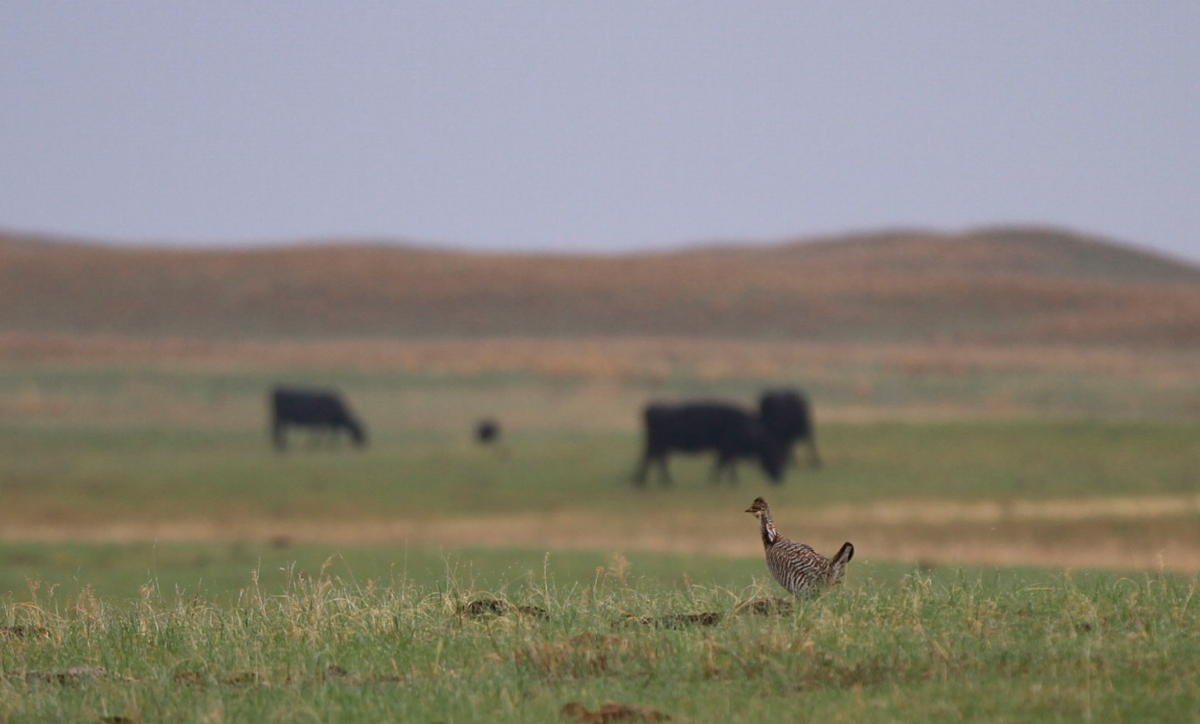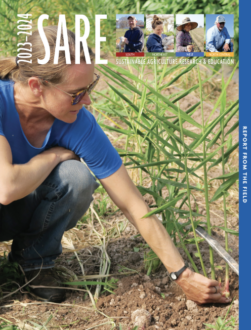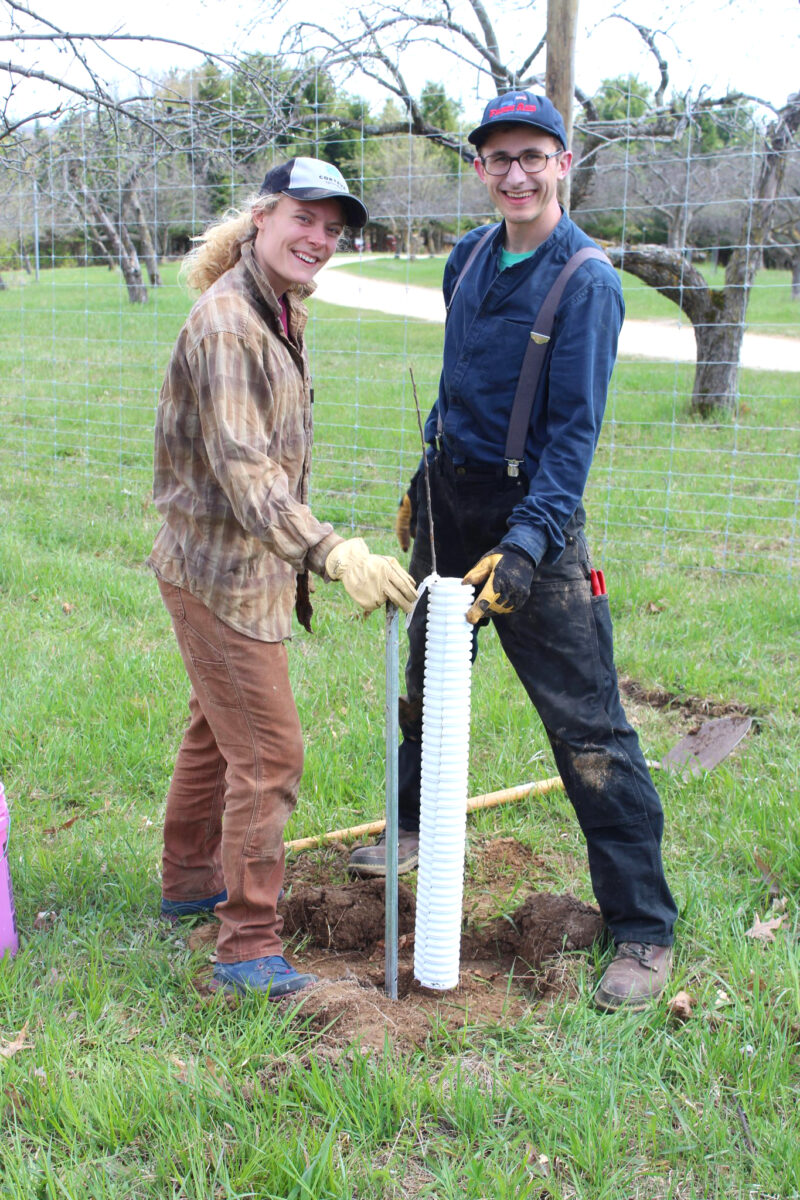
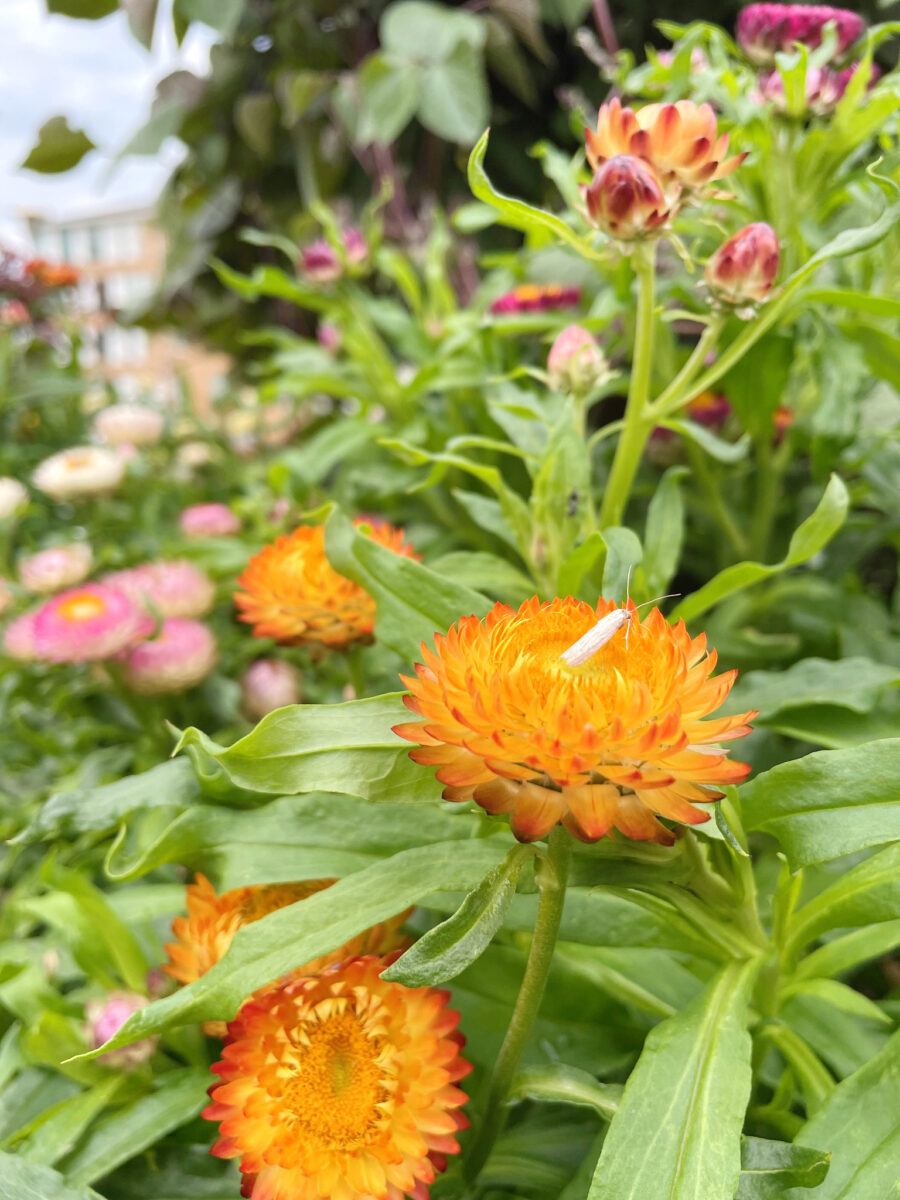
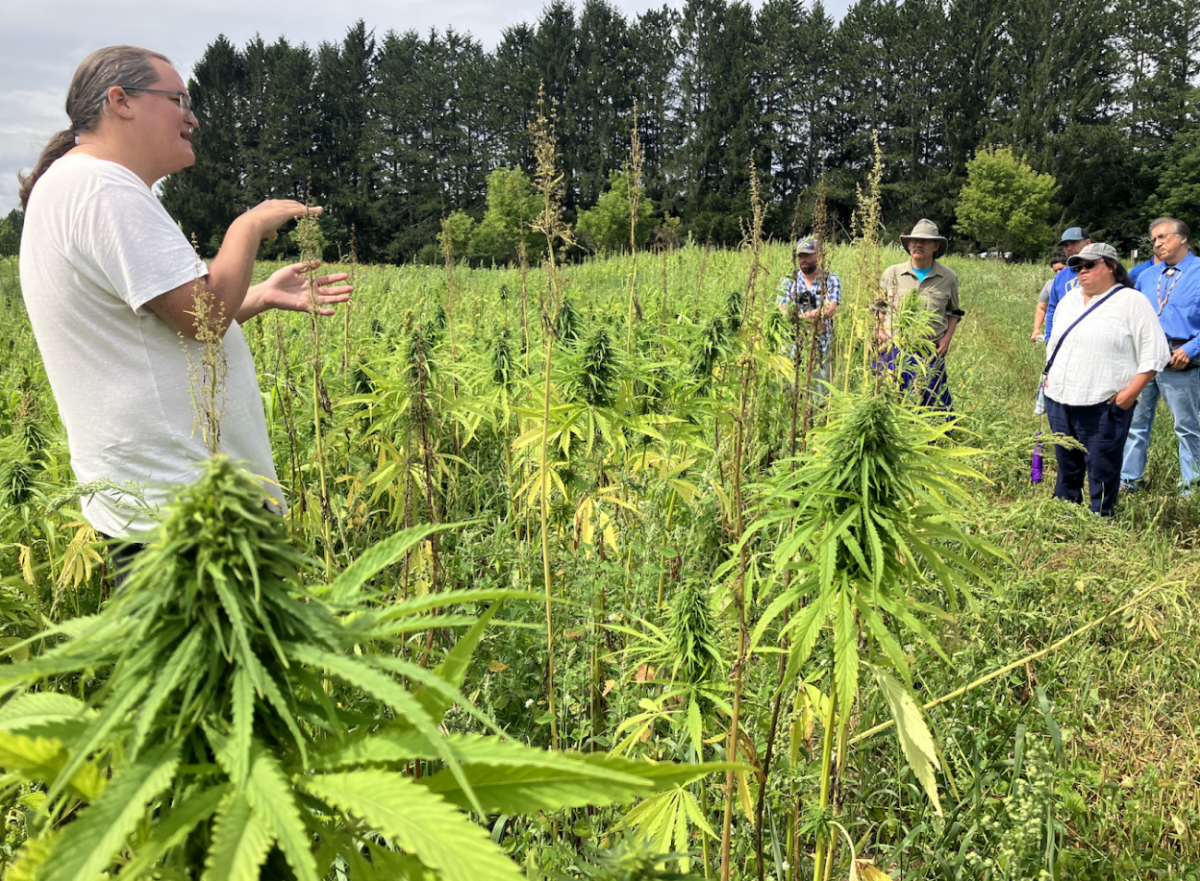
Recent Highlights from the North Central Region
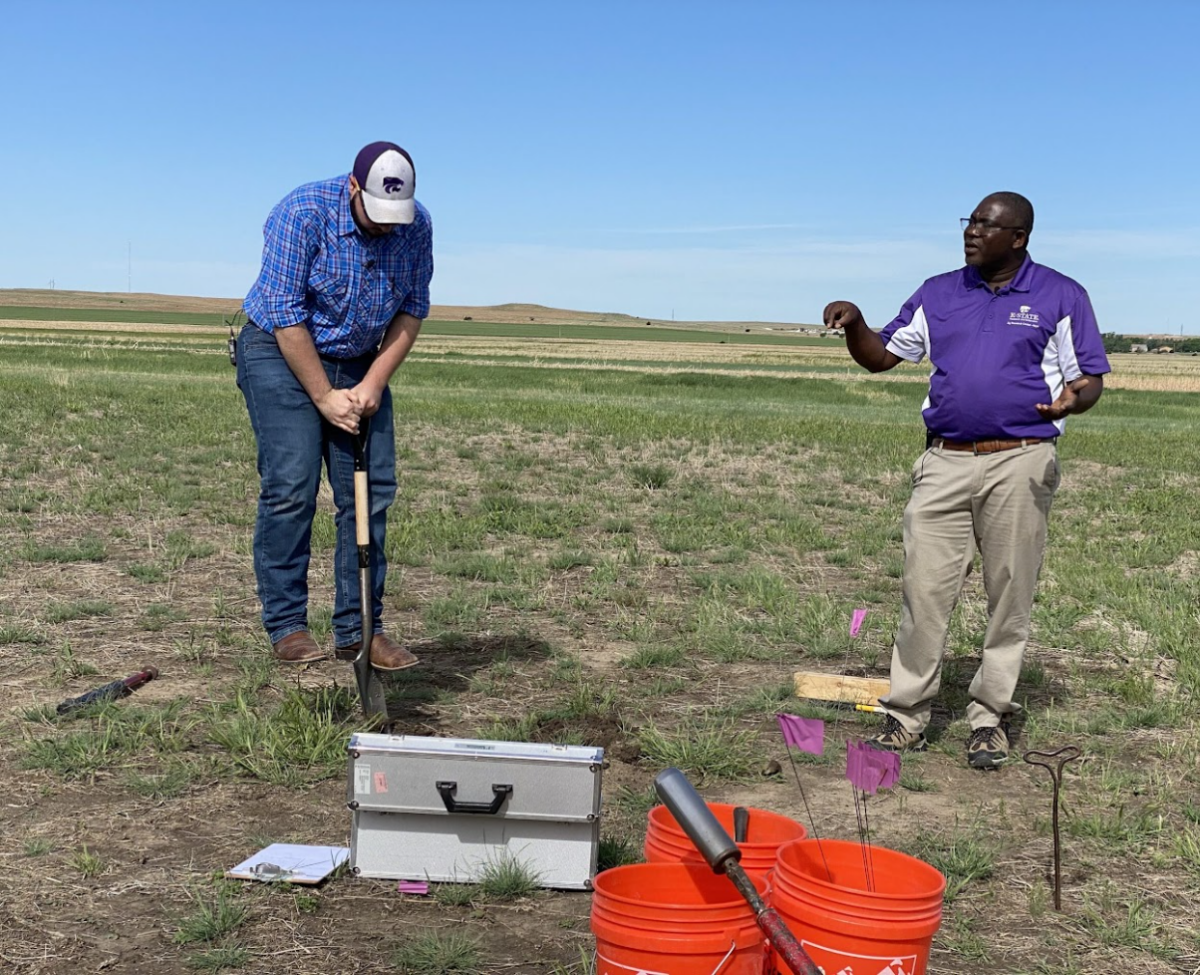
- Since 2012, North Central SARE, the Conservation Technology Innovation Center (CTIC), and other partner organizations have surveyed farmers nationally about their experiences with cover crops. In 2022, our 7th cover crop survey addressed new topics like cover crop grazing, carbon sequestration and newer management strategies, alongside yield and economic data.
- We have expanded our Farmers Forums, enabling grant recipients to share sustainable agriculture practices at conferences. In 2022, Farmers Forums were held in all 12 states, supporting more than 50 grantees’ participation and the exchange of valuable project insights.
- In our ongoing efforts to be inclusive and to build connections with a wide range of producers, we collaborated with the 1994 land grant institutions in the region to pilot a 1994 Tribal College Coordinator program. The 1994 Tribal College Coordinator will support train-the-trainer programs and share information about our grant programs and other sustainable agriculture resources with the five tribal colleges in Michigan and Wisconsin. We also funded a Spanish version of the video series “What Is Sustainable Agriculture?”.
- We launched the “Farming Matters” YouTube video series to highlight the diverse perspectives and experiences of farmers, ranchers, educators and researchers involved in sustainable agriculture research
Total Grant Awards 1988-20231
2,952 GRANTS
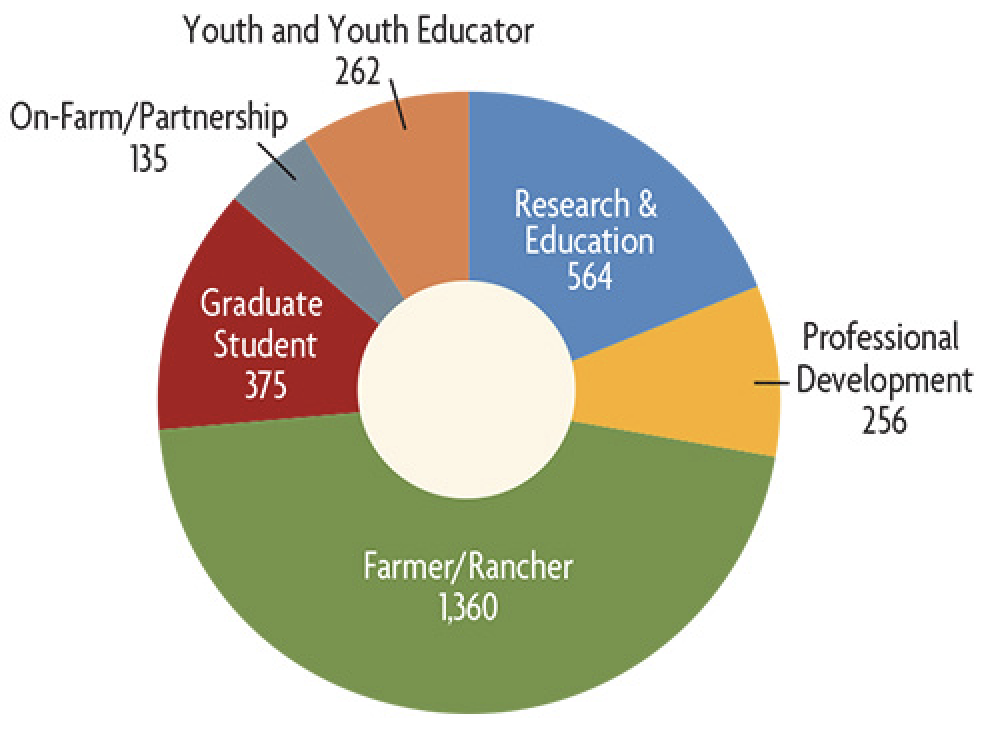
$101.4 MILLION
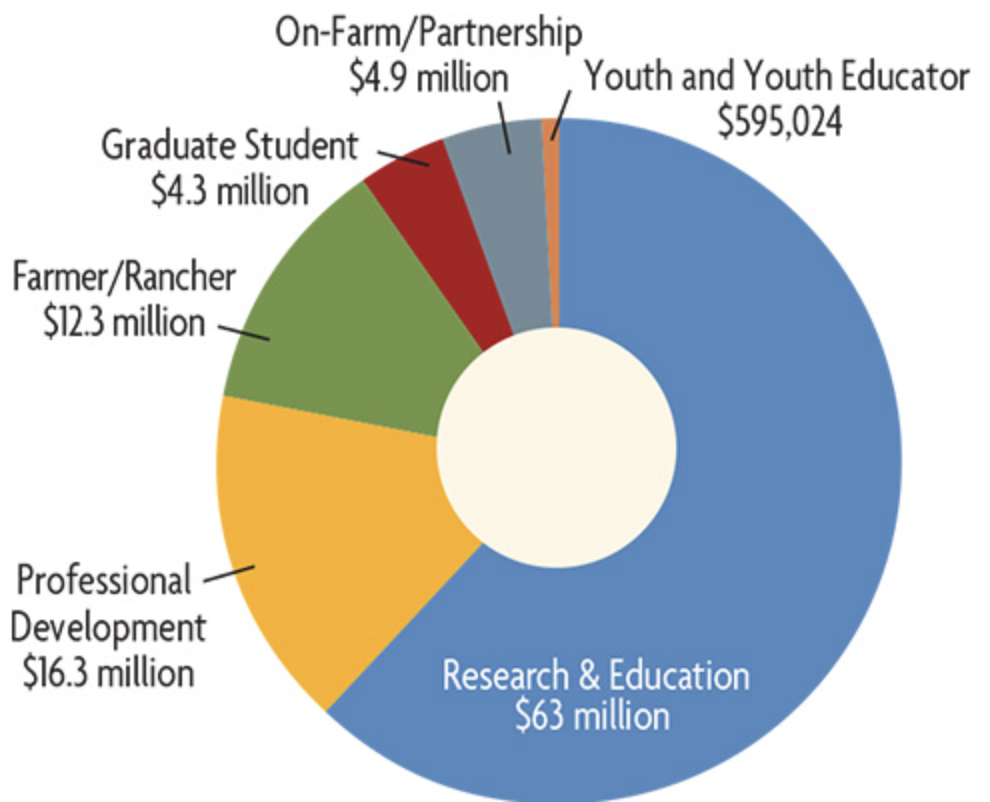
Grant Proposals and Awards 2022-20231
| Grant type | Preproposals Received2 | Full Proposals Invited | Full Proposals Received | Proposals Funded | Funding Total |
| Research and Education | 246 | 73 | 67 | 34 | $7,782,556 |
| Professional Development Program | N/A | N/A | 48 | 24 | $2,208,300 |
| Farmer/Rancher | N/A | N/A | 251 | 84 | $1,477,624 |
| On-Farm Research/Partnership | N/A | N/A | 75 | 39 | $1,672,199 |
| Graduate Student | N/A | N/A | 105 | 43 | $635,049 |
1These totals exclude additional direct funding given each year to Cooperative Extension in every state to support state-level programming on sustainable agriculture.
2The use of a preproposal process varies by region. It serves to screen project ideas for the larger and more complex grant programs, and to reduce applicants' proposal preparation burden as well as the proposal review burden for SARE's volunteer reviewers.
Bringing Nutritious Options to Food Deserts
The Challenge
Urban areas with limited access to fresh and affordable food, commonly known as food deserts, are typically located in historically marginalized communities. Residents in these areas often have poorer health outcomes and may lack knowledge about food nutrition and preparation. Legacy Taste of the Garden is a Black-owned, multi-generational farm occupying four acres across three Indiana locations. With a goal to address the region’s food access and information needs, Legacy secured a Farmer/Rancher grant to promote and offer fresh and local food, educate their community about traditional farming and gardening methods, and close the gap between local producers and consumers.

This SARE youth grant
John Jamerson, Legacy Taste of the Garden
project was the foundation
to establishing the national
presence that Legacy Taste
of the Garden has today.
The Actions Taken
Legacy Taste of the Garden Operations Director John Jamerson partnered with two other area farms to educate youth and adults alike about urban farming practices and business opportunities. Participants learned about Legacy’s farming methods like using hoop houses and bucket systems, as well as about direct marketing models like community-supported agriculture (CSA). Additionally, Jamerson collaborated with chefs to create educational programming and materials centered on nutrition and food preparation, including a “28-day challenge” that guided participants through a month-long, plant-based diet. An app was developed to direct community members to local food options. The multi-faceted project connected consumers to local producers and provided an example of how one can operate and sustain an urban farm business.
The Impacts
Legacy Taste of the Garden was highly successful at its efforts to improve local food access and to generate enthusiasm for sustainable agriculture and nutritious whole foods. Specific impacts include:
- Increased availability of fresh food: Community members gained access to fresh produce thanks to Legacy’s decision to grow food across three separate food-desert locations.
- Local outreach: Legacy Taste of the Garden not only provided education on sustainable agriculture practices, but they also conducted workshops, 4-H programs and virtual cooking demonstrations about preparing healthy food.
- Community engagement: The project led to partnerships with local organizations, libraries, churches and farmers. Social media efforts and a website connected food producers with consumers through information on events, markets and crop availability.
Learn more: See the related SARE project FNC19-1169.
Scaling up Value-Added Local Food in Ohio
SARE grants have helped our viability as a business and demonstrated that small businesses can make a positive impact on the environment when we develop relationships with each other for the benefit of all. We hope to inspire others to develop similar local hubs, duplicating our efforts around the state and beyond.”
Jeanine Seabrook, Glass Rooster Cannery
The Challenge
Producers and processors involved in sustainable agriculture are concerned with food waste and how to keep edible produce from heading to the compost heap. Value-added foods like jams, pickles, sauces and preserves offer not only an additional, year-round income stream for farmers, but they’re also a reliable option for making the most of each season’s bounty. Jeanine Seabrook and her team at Glass Rooster Cannery, a sustainable farm that teaches home canning in central Ohio, wanted to reduce waste, connect with their farm community through partnerships and provide processing services that generate profit for both the cannery and its farmer partners.
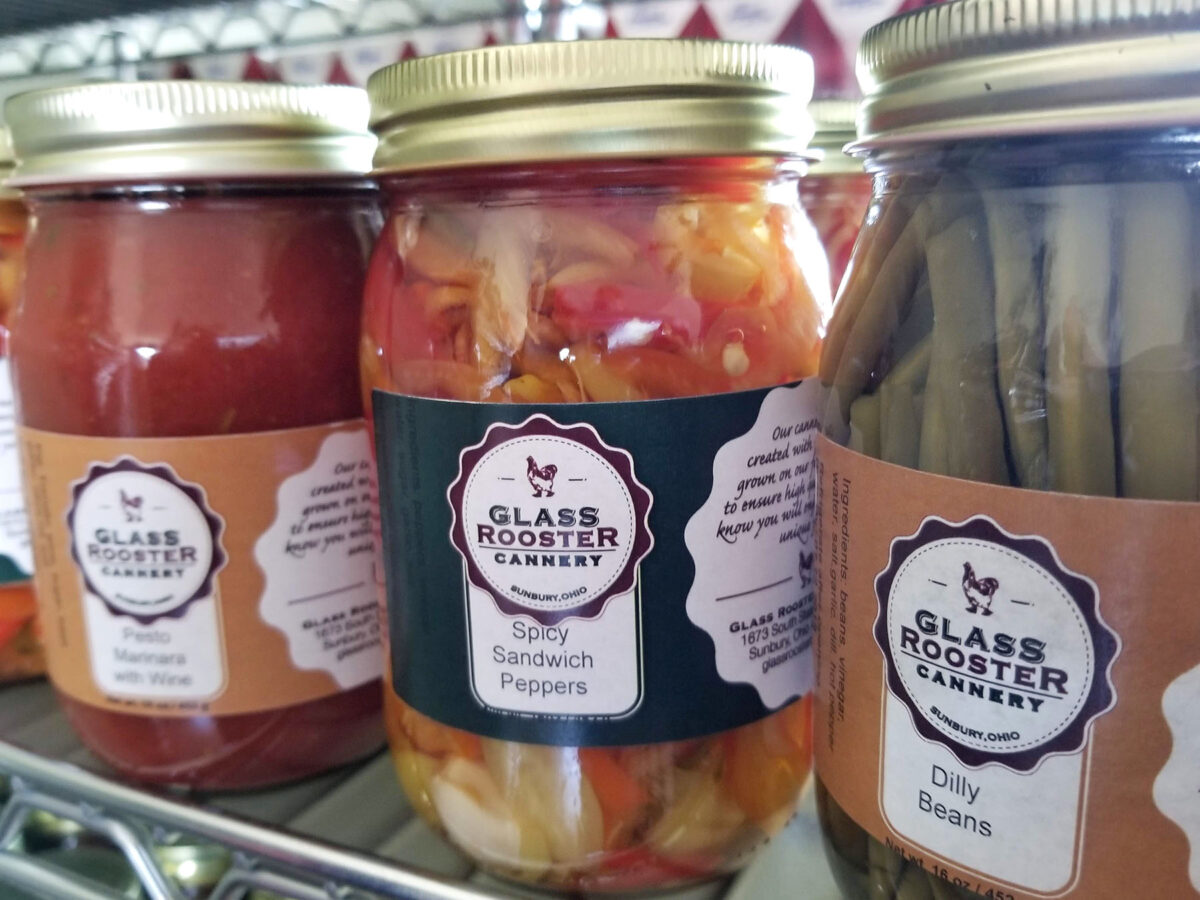

The Actions Taken
Seabrook was awarded two Farmer/Rancher grants between 2016 and 2023. The first grant allowed the licensed cannery to expand its capacity through the purchase of a 40-gallon steam jacket kettle and canning supplies. This investment reduced production costs, increased batch sizes and gave local farmers the opportunity to sell shelf-safe products made with their excess produce. By the end of the first season, Glass Rooster had used 12,000 pounds of produce and canned 8,000 jars of product. Eight partnering farmers received 25% of the finished product to sell at market. Building on the success of the first project, Seabrook used the second grant to further expand the cannery to include a climate-controlled holding area and additional commercial equipment. More area farmers got involved thanks to the increased capacity for produce processing, and storage and spoilage were no longer issues. By the end of the 2021 season, Glass Rooster had processed more than 30,000 pounds of farmer-provided produce.
The Impacts
These projects have been a resounding success for Glass Rooster Cannery, its community and the local farmers involved. Specific impacts include:
- Added profit: Each jar generates between $1 and $3 for the cannery and its partners, providing steady income during the off season.
- Enormous demand: The projects were so successful that Glass Rooster had to turn away potential partners, creating a future opportunity for additional expansion.
- Waste diversion: As a result of SARE funding, Glass Rooster has been able to divert thousands of pounds of excess produce from landfills and compost piles and turn it into pickles, sauces and other goods enjoyed by the surrounding community.
Learn more: See the related SARE projects FNC21-1304 and FNC16-1056.
Shedding Light on Ranchers’ Views of Grassland Conservation Payments
The Challenge
Though grasslands account for 46% of Nebraska’s 49.5 million acres, they’re one of the least protected and most altered vegetation types. Converting grasslands for other uses can lead to soil erosion, reduced or contaminated water resources, and a loss of biodiversity. At the community level, conversion shrinks grasslands and removes job opportunities, reducing income for ranchers and affecting livelihoods in rural areas. Grassland conservation programs do exist to help preserve these landscapes for future generations, including direct payments to producers for land conservation, but these programs don’t account for the many non-agricultural benefits and services grasslands provide, such as wildlife habitat, water purification, carbon sequestration and nutrient cycling. Despite these ecological services, temperate grasslands are being converted at five times the rate than they can currently be protected.
Safeguarding Nebraska’s natural resources for an uncertain future should be at the top of the agenda for policymakers in the state. Our research shows the ranching community is ready for the challenge, but it will take some out-of-the box thinking and teamwork to get us there."
Kyle Martens, University of Nebraska
The Actions Taken
Kyle Martens, now a doctoral candidate at University of Nebraska, wanted to better understand ranchers’ preferences for emerging grassland conservation programs in the state, known as payment for ecological services (PES) programs. After receiving a Graduate Student grant in 2020, Martens set out to learn what aspects of PES programs would most benefit Nebraska’s ranchers and lead to more adoption of conservation practices. He partnered with several organizations to survey those most affected by grassland loss, with the goal of receiving direct feedback from ranchers and ag professionals on their preferences for management actions, payment amounts and contract lengths of voluntary conservation programs. The results were intriguing. Survey participants prioritized practices that improve biological diversity, and while they showed a keen interest in incentivized management actions, they were less concerned with the amount of payment or length of contract.
The Impacts
Survey results showed clear interest by Nebraska’s ranchers to participate in flexible conservation programs that reflect the challenges of ranching in a grassland ecosystem and that honor the ecological services provided by their management actions. Specific impacts include:
- Encouraging biodiversity: Martens found it notable that using grazing to conserve biodiversity was preferred over 15 other management practices suggested in the survey.
- Protecting livelihoods: Ranchers want incentivized conservation programs to work in tandem with their lifestyle in order to enhance profitability and long-term business sustainability.
- Stakeholder engagement: Ranchers demonstrated a significant interest in engaging in the PES process so that incentives more closely align with their concerns and priorities.
Learn more: See the related SARE project GNC20-307.
